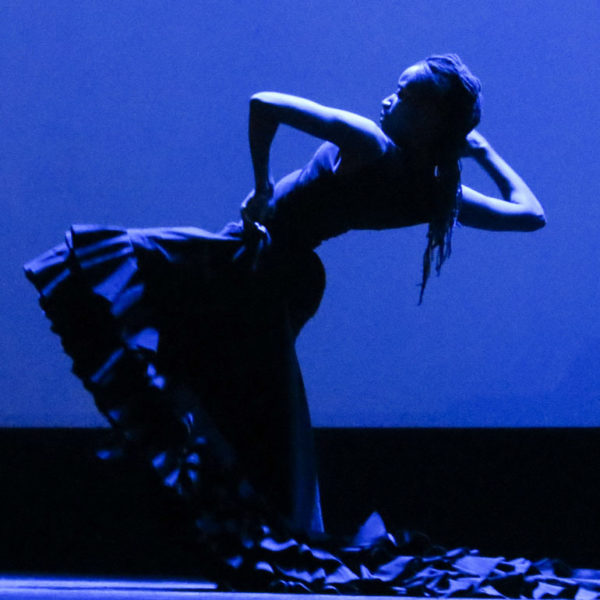K. Meira Goldberg is a flamenco dancer, choreographer, scholar and author of the upcoming book Sonidos Negros: On the Blackness of Flamenco. In October 2018, she was a key organizer for a conference/festival in New York City called The Body Questions: Celebrating Flamenco’s Tangled Roots. There were fascinating papers delivered, a screening of Miguel Angel Rosales’s groundbreaking documentary film Gurumbé: Afro-Andalusian Memories, dance performances, including one by Yinka Esi Graves, and a number of musical performances, notably a solo concert by Raúl Rodríguez, inventor and master of the flamenco tres. It was a rich couple of days, and an opportunity for Afropop Worldwide to research our program "The Hidden Blackness of Flamenco." After the conference ended, Banning Eyre sat down with Meira for an interview. Here’s their conversation.
Banning Eyre: My first question is how to pronounce your name. I've heard a few versions—MAY-rah, May-EE-rah, MAY-dah. What should we say on the radio?
Meira Goldberg: Well, we can say MAY-dah Goldberg. It's a Hebrew name. May-EE-rah is what my family calls me. But it's pronounced in Spanish because in the flamenco world, that's what people call me.
Got it. Why don’t you introduce yourself and tell us a little of your background and how you got to flamenco.
My name is Meira Goldberg. And I'm a flamenco dancer, and I've also done choreography and a lot of teaching. And for the past 10 years I've been doing a bunch of scholarship about flamenco. I have a book coming out called Sonidos Negros: On the Blackness of Flamenco. It's coming out from Oxford University Press this fall, 2018.
When I was in high school I took a dance class basically to avoid taking a physical education class, and my teacher was taking a flamenco class and dragged me there to watch. I saw it and I just fell in love when I was 15 years old. I had the great fortune to study with the wonderful dancer called Carmen Mora, Belén Maya’s mother, and they were in Los Angeles because they had contracts there. I was able to study with Carmen intensively when she was in L.A. And then, during college, I saved money, working as a cocktail waitress, and after I graduated, I traveled to Spain. I arrived on a Monday, and by that Friday I was working in one of the tablaos. So then I spent five years dancing in the tablaos. And then I was a flamenco dancer.
Because you had been trained in L.A.
Well, yes, but also because my teacher was now back in Spain, and she put me in there. She was like, "Well, I have an audition set for you tomorrow."

Wow. That must've been quite an experience.
It was pretty amazing. I was young.
How long did you do that for?
I was there for five years, performing twice a night in a set that lasts an hour and a half. You’re playing palmas, doing the flamenco clapping, for other people, and then dancing solo twice a night. For five years. So that was pretty amazing training.
Now I know you've written this book about the blackness of flamenco, but when you think back to that time, did you have any awareness of that aspect of music and dance?
Certainly not. I mean, it's not anything that was even conceived of, frankly. I think somebody made the comment yesterday in one of the sessions that there weren't black people in Spain. When I lived in Spain in the 1980s, it seemed there were not any black people there. You would not see black people walking down the street. So it was very different from the United States in that way.
It was interesting when I was speaking with both Yinka Graves, the black flamenco dancer, and also Raúl Rodríguez, the musician, they both said that while there are few black people in Spain, they both see blackness everywhere in the people around them there.
Absolutely. Now we do. Now with our consciousness of today, we do. But at the time, we didn't.
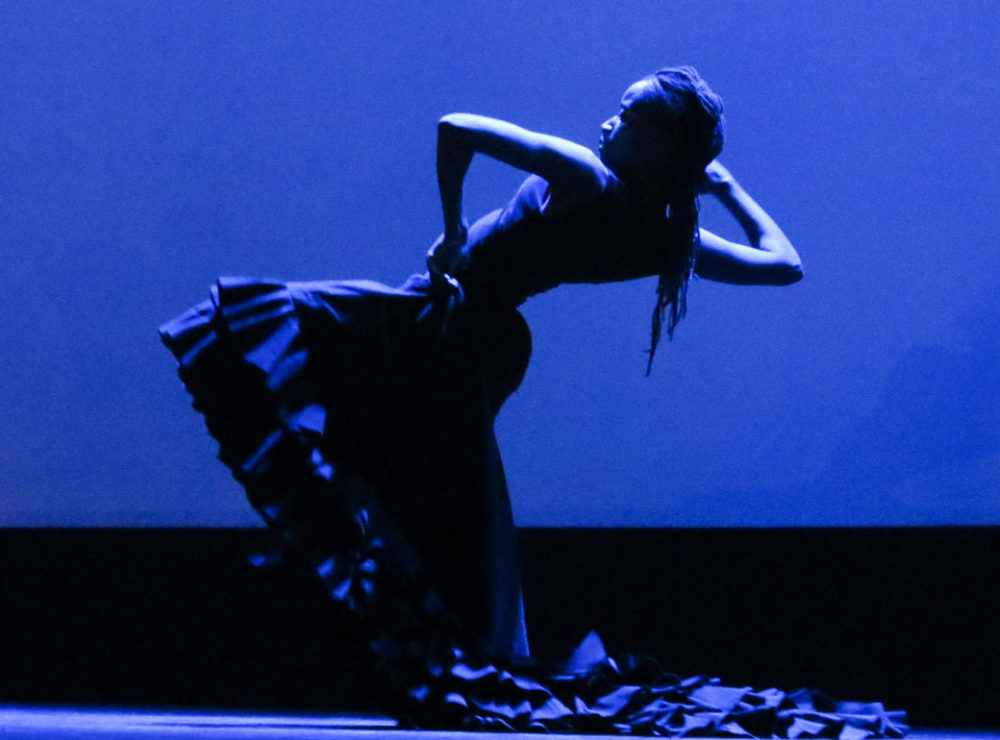
So how did you come to this subject?
Well, first of all, I'm a North American. I'm a citizen of the United States, so when you grow up with that racist culture, it sort of seeds some ideas and some thoughts in you. When I went to Spain, I was able to be accepted in this world, which is actually hard to penetrate. The community of performers in Madrid is not easy to enter. A lot of them, in fact most in the places where I was working, were Roma people. I'm Jewish, and on the one hand, I felt like they accepted me way more than the Spaniards did. But the other part of that is that I was always chasing after "authenticity." In scare quotes. I was always trying to be genuine. That's really the only way you could be accepted: if you were genuine, while also at the same time, respecting the form and trying to understand its systems, and what makes it work.
Then, at a certain point, I decided that I wasn't going to spend the rest of my life working until 3 o'clock in the morning in some dive somewhere, so I came back to the United States. I had never performed here very much. I came back to the East Coast, not the West Coast, because that was too far from Spain. I wasn't really known here as a dancer, so basically, I went to graduate school. And when I fell into graduate school at Temple University in Philadelphia, I struck up a relationship almost immediately with Brenda Dixon Gottschild, who was at the conference this week. She was working on her book, which is a seminal book for dance studies, and for black dance studies, called Digging the Africanist Presence in American Performance.
It is just a super important book, because what she is doing is looking at the body and movement, and the traces we carry of culture, and looking for the Africanist traces. She was following Robert Farris Thompson, and we were reading Houston Baker Jr.’s writing about the Harlem Renaissance. This was the kind of thinking that was in the air, and when she was writing her book, I was her student, and I was applying her emerging theories to flamenco. My doctoral dissertation, which she directed, is called Border Trespasses: The Gypsy Mask and Carmen Amaya’s Flamenco Dance. I talk about the Gypsy persona, the stereotype in terms of a minstrel mask, something that flamenco artists can never escape from, but at the same time, they find ways to subvert it and undo it and change it. That's how I came to that.
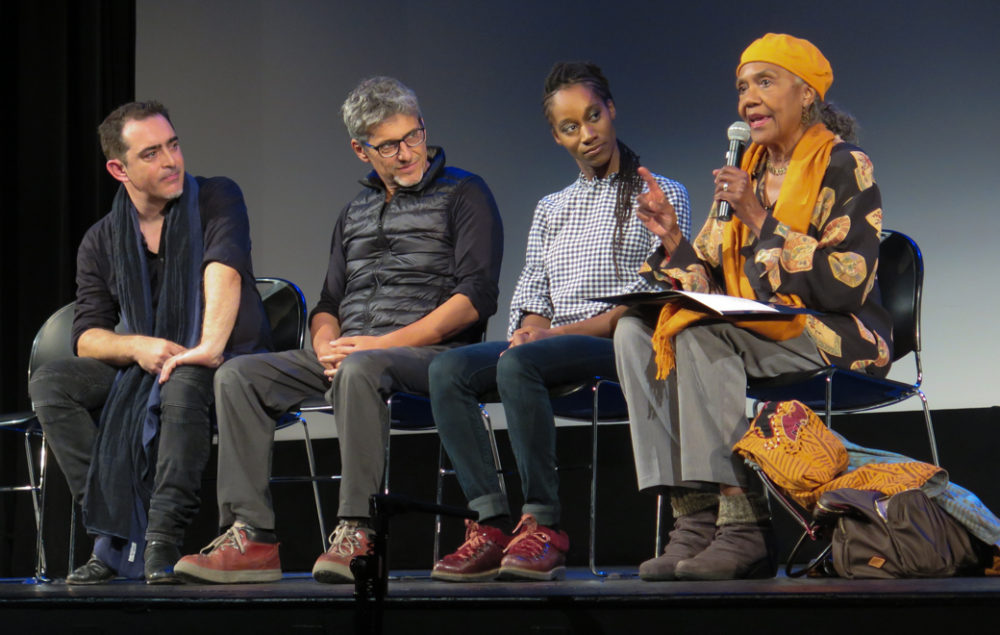
And that leads to the book. I spoke about the history of blacks in Spain with Miguel Ángel Rosales and Raúl Rodríguez. So that people understand, there's a kind of untold Spanish history about how blackness comes into Spanish culture more broadly, but specifically flamenco. How would you summarize that?
I have a slightly different take than Raúl and Miguel Ángel. What they are looking at is the African essence of flamenco. They look at the actual African roots that we have in flamenco. I thought that's the book I was going to be writing, but it turned out not to be the book I wrote. The book I wrote is about the blackness of flamenco, and this has to do with the catastrophic dogma dictating that people who were not Christian should be enslaved. This was a dogma that evolved on the Iberian Peninsula during the medieval period, when the main goal was to get rid of the Moors and the Jews, which finally happened in 1492. And that ideology was just transposed onto the trans-Atlantic slave trade. So what I talk about in my book is how the idea of race really began in Spain as a way of differentiating Christians from those who are not Christian, and then becomes this kind of monster that affects us so much today.

In my book, I talk about this in terms of the body and dance. I actually look at the dance elements that were used to depict blackness, or otherness, in Spain. This has to do with deformity. It has to do with confusion. And it gets acted out in the Christmas story. There's a figure I talk about in my book, the Pastor Bobo, the bumpkin shepherd. In the Nativity story, he is an evangelist, somebody who is going to explain the birth of Christ to the audience. He’s a clown: He comes stumbling onto the stage, and he’s been drinking too much and he's really lascivious and confused. And he's doing footwork all the time and he's jumping up and down because he's so lascivious. And the drama comes from the audience wondering: Is he going to see that Christ is born? Is he going to get that? And we in the audience see that happening, because if he gets it, then his language becomes elevated. He becomes composed, and he starts to speak in Latin as opposed to pidgin "black talk." And of course this transformation happens in the body too.
So I really am sort of looking at some very fundamental dance ideas that come into character dance and ballet, and come into flamenco in terms of footwork. I mean all of our footwork that we do is somehow related to this image of the Pastor Bobo.
Pastor Bobo. Let's put him in a time frame. When is this happening?
He is a medieval Nativity play figure. And then later, in the 17th century, he becomes what is called the gracioso in the theater of the Siglo de Oro—it is so interesting that, as was mentioned yesterday, the gold from the Americas gave the name for the entire century. But in those works from the Spanish Siglo de Oro , which were very sarcastic and sardonic, and critical of power, this bumpkin shepherd becomes the gracioso. Pastor Bobo is the astute clown, the astute fool, who will speak truth to power, but you can't get him for it because he's just dumb. He's just confused.
Does he eventually attain this insight?
Well that's the whole point. Does he attain redemption, or not? That's the whole drama.
And is it ever resolved?
It's a drama every time. It's something that is played out again and again. It can go either way. Because what happens if he doesn't get redeemed? Then he goes to hell. So, really, the stakes are very, very high. For people who were enslaved, the stakes couldn't have been higher, and the story was something that was used to indoctrinate people to Christianity, obviously. But I think it also opens the door for Africanist elements to creep into our culture.

Fascinating. Let's come back to the history. We did three Hip Deep programs about the legacy of Al-Andalus. Before and after 1492 and expulsions. When you mentioned the expulsions, you talked about the Moors and Jews being expelled, as though it happened in a thunderbolt. But it wasn't really like that, was it? We have to assume that some of the mMoriscos, the presumably converted, were not really converted. What do we know about the lives of Africans, or African-descended people, Afro-Andalusians. What do we know about their lives after 1492?
Well, the Afro-descendants who had been Christianized were not expelled in quite the same way. And one thing about the Moriscos that is pretty startling is that after the Moriscos were finally expelled in 1609, the children under the age of 10 were required to be kept in Spain.
Family separation. That rings a bell.
So you can imagine that people came back, or they went into hiding. I mean, you're not going to leave your child behind. So it's one of those many, many circumstances, like Triana and other underclass neighborhoods if you will, where people who are marginalized live together, and they really are all rubbing up against each other. In Spain, in terms of the history of slavery in Spain, what happened with the Atlantic slave trade amping up is that people, everyday people in Spain stopped having the wealth to buy slaves. And as you saw in the film Gurumbé, the great weight of people that were captured and enslaved were carried through the Middle Passage to the Americas directly. They stopped passing through Seville. They stopped passing through Cadiz.
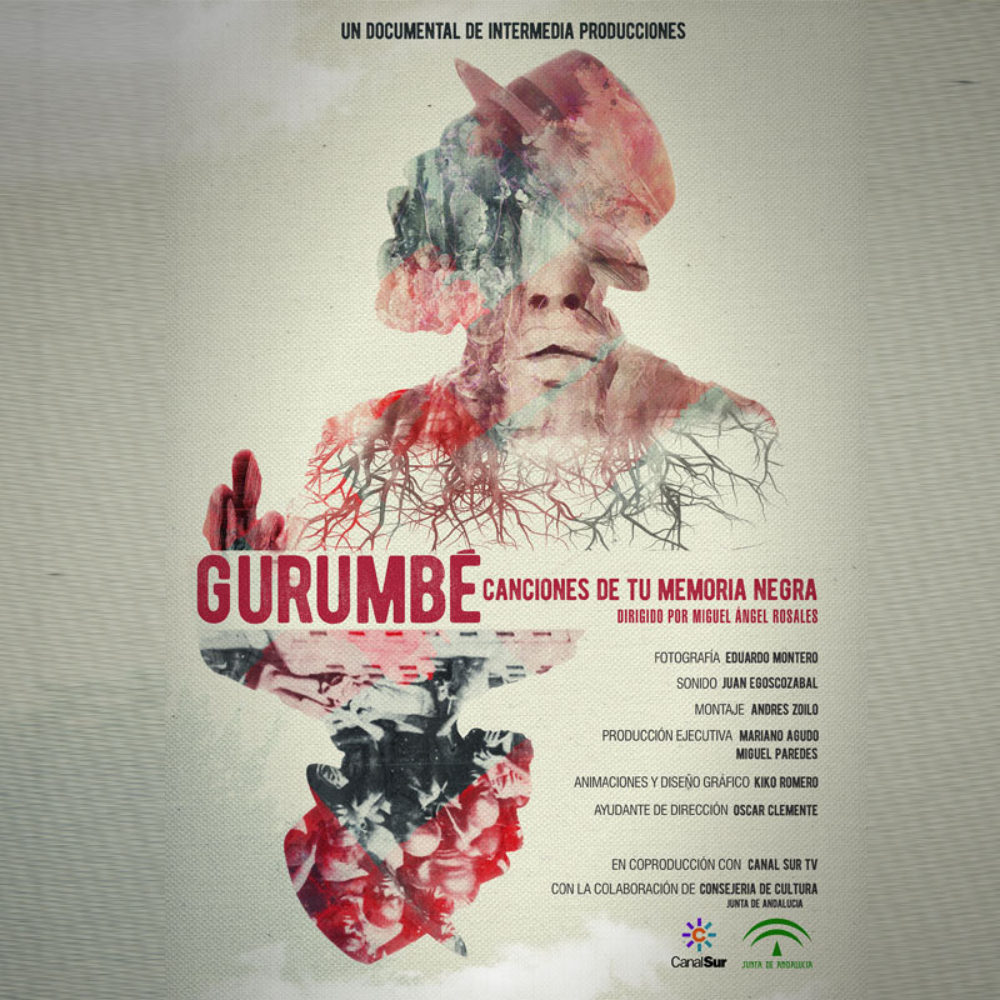
So, perhaps, the Afro descendants that remained had been there for a long time… Also, another thing about slavery in Spain is that slaves were permitted to buy back their freedom, which is called ahorrar, which is very interesting because ahorrar is the word for savings. Like to go to a savings bank. And it is interesting that the word esclavo, which means "slave," was branded on people's bodies with the letter S and then a clavo, which is a nail, going through the S, which is basically our $ dollar sign. I find that kind of interesting.
So those people who were able to buy their “freedom,” were still very much marginalized and they lived in these marginalized neighborhoods. There is some evidence of people, black people, working as choreographers for example in the 17th century processional dances, the religious celebrations which were part of public entertainments. But black people were just fewer and farther between, to the point where by the 1980s, when I lived in Spain, you just didn't see them. That's why Spain doesn't realize about its history of slavery, because they just never thought they even had a black population.
That reminds me of some research I've done on Argentina where there were once blacks but they’re not in evidence today. And of course we did a program with Robert Farris Thompson about his tango book, which digs into that history.
Exactly. By the way, that book was what set me on this path. Reading that book was just an epiphany for me. It totally set me to writing this book.
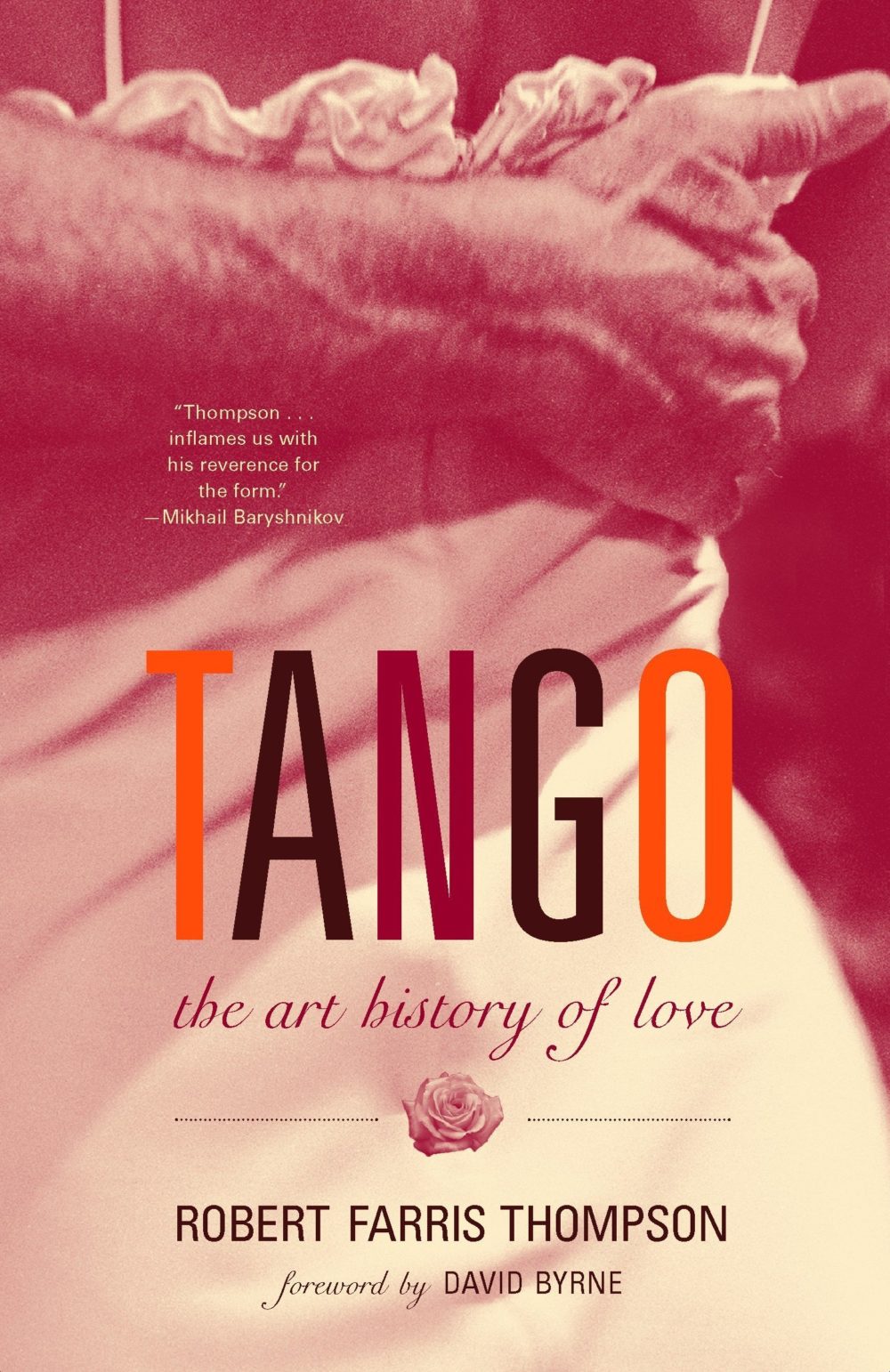
That's wonderful. Let's talk a little about the Roma. When did they come to Spain in numbers?
I think the first immigration is in 1423. So already in the 15th century, they are coming in in numbers.
So between then and the birth of flamenco in the mid-19th century, a lot of things go on. That's a long time. It's a little bit analogous to the blues. In our country when the prehistory of jazz and blues was being written with very little observation and documentation. We don't know what those interactions were like. It's endlessly intriguing.
It is.
But it's impossible to know.
Well, it's very interesting, because I really do think there are continuities. And one of the things about the Roma people that I think is important for your listeners to know is that the Roma are always performing artists, one way or another. They could be a fortune teller. They could be a musician. But they were very often performing artists. So they are people that are taking the material in the cultural milieu they find themselves in. It's funny, because I was talking to someone about this, and it's something I wrote about in my dissertation in 1995 and I feel like I have to explain it again now. There are a lot of polemics between the Roma flamenco artists and the non-Roma flamenco artists. The gitano and the payo flamenco artists. There is all kinds of politics going on about that.
I think one thing that is important to know is that you can't take the Roma out of flamenco. It is racist to take the Roma out of flamenco, because it's exactly what is happened to African-Americans here. The culture has been appropriated. They have been erased. And that's the end of that. What's happening now in Spain is that there is a backlash against this kind of romantic image of the Gypsy Carmen or whatever that says, "No, we’re not the Gypsy. We’re Spaniards. We’re Andalusian. We don't want to be identified with the stereotype." Which is perfectly understandable. But what I talk about in my book is that one of the important things about black performance theory that is really useful to apply to flamenco is that you can't talk about the people as if they were the image. You have to talk about the people in their dialogical relationship with that image, that stereotype that they cannot escape. So it is really, really unjust to erase the contribution that Roma people have made to flamenco or their importance to the art form.
At the same time, what I argue in my book is that the image or the stereotype of the Gypsy is the image of blackness for Spain. So all of those things, the confusion, the noisiness, the subversiveness, the speaking truth to power, the transgression – all of that stuff is what signifies blackness for Spain, and that is what flamenco is.

I don't think you could take the Roma out of flamenco no matter how hard you tried.
It's funny. Because you might think I'm working against myself in saying that. Because on the one hand, I really want to express that idea to people. I think it's very important. And unfortunately, I think there are some people who are sort of taking a bad slide theoretically, because they're trying to bring out the other voices that contribute to flamenco, the African voices that contribute, the voices of many other people that contribute to flamenco, and that is something I completely want to happen. It needs to happen. But at the same time, it can't happen at the expense of erasing the Roma. It can't happen in competition with other people.
A very good point. And that brings me to this. When I was talking to Raúl and Miguel, they were talking about how this film, Gurumbé, which came out only in 2016, has had quite an impact on the community. They talk about "before and after” effect.
That's very true.

Some people might not like the idea of Afro-Andalusians, and maybe some will downplay their role, but people can't deny it anymore. Can you tell me about why this film has been able to have such a strong impact.
It is interesting. When we presented Gurumbé last December, I said, "This film will change your life." Because Spaniards don't know their history. And flamencos don't know their history. Flamencos just have not known any of this history. Period. They just have not known. Any of it. Obviously, it's told in such a powerful way in the film. It's told in such an impactful way and that's part of the reason that the film changes your life. But the other part of it is that it's just a history that we have never even conceived of.
One of the chapters in my book is based on a dancer who was the first male flamenco dancer who was ever filmed: in 1900 at the Paris World's Fair. The Lumière brothers, who were among the early cinematographers, filmed a flamenco performance. It's the first film of a flamenco cuadro, which is a performing ensemble. So this is after flamenco has existed as a genre. And it’s the first film we have. It's obviously a silent film, but when you look at them, they are doing absolutely recognizable moves. It is completely recognizable to us today. And this film had been floating around the Internet, and scholars had been talking about who the male dancer was. Because he's the first male flamenco dancer ever filmed. And they were saying that it is one of the maestros of dance, Maestro José Otero Aranda. He wrote a very important treatise on Spanish dance in 1912, a very important source for everybody. And he had all kinds of students from all over the world come to study with him. He was pretty well known.
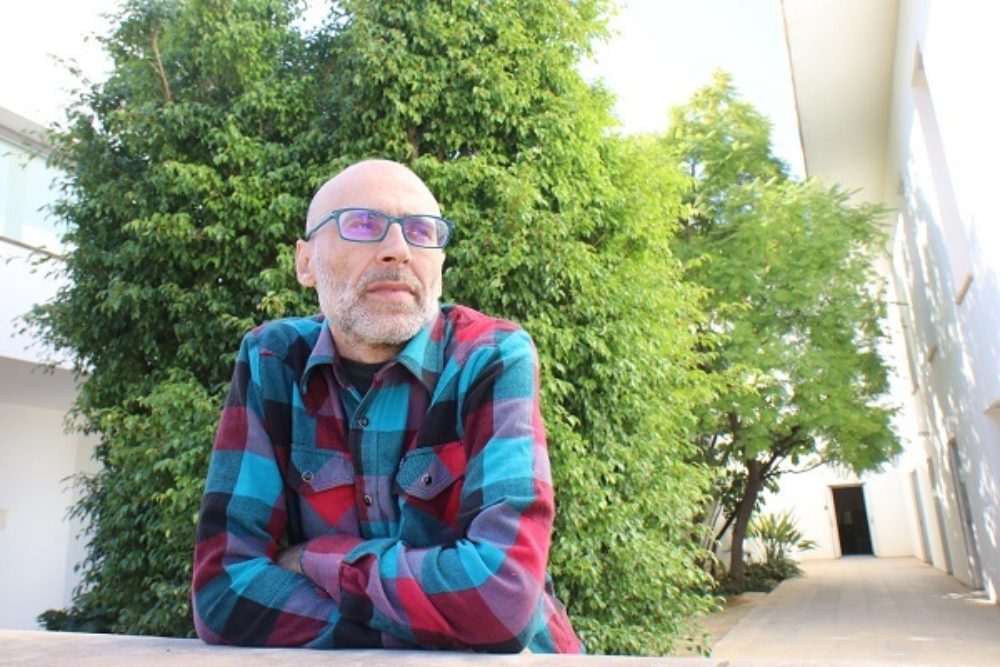
So everyone looking at the film said, “This is Maestro Otero.” And I started working with my colleague and friend Kiko Mora on an article about this film, and he kept saying to me, "This can't be Maestro Otero. This is a black man." And I was like, “That's impossible. It can't be a black man. There's never been a black man dancing flamenco ever.” And he said to me, "No, no, no. He's a black man." I was like, "No, no it's the angle of the sun on his face."
And Mora was right: This person – his name is Jacinto Padilla “El Negro Meri”—and this is a discovery that was made last year—was erased from flamenco history for 100 years.
He was only identified last year? How was he identified?
By Kiko Mora in this research that we were doing together.
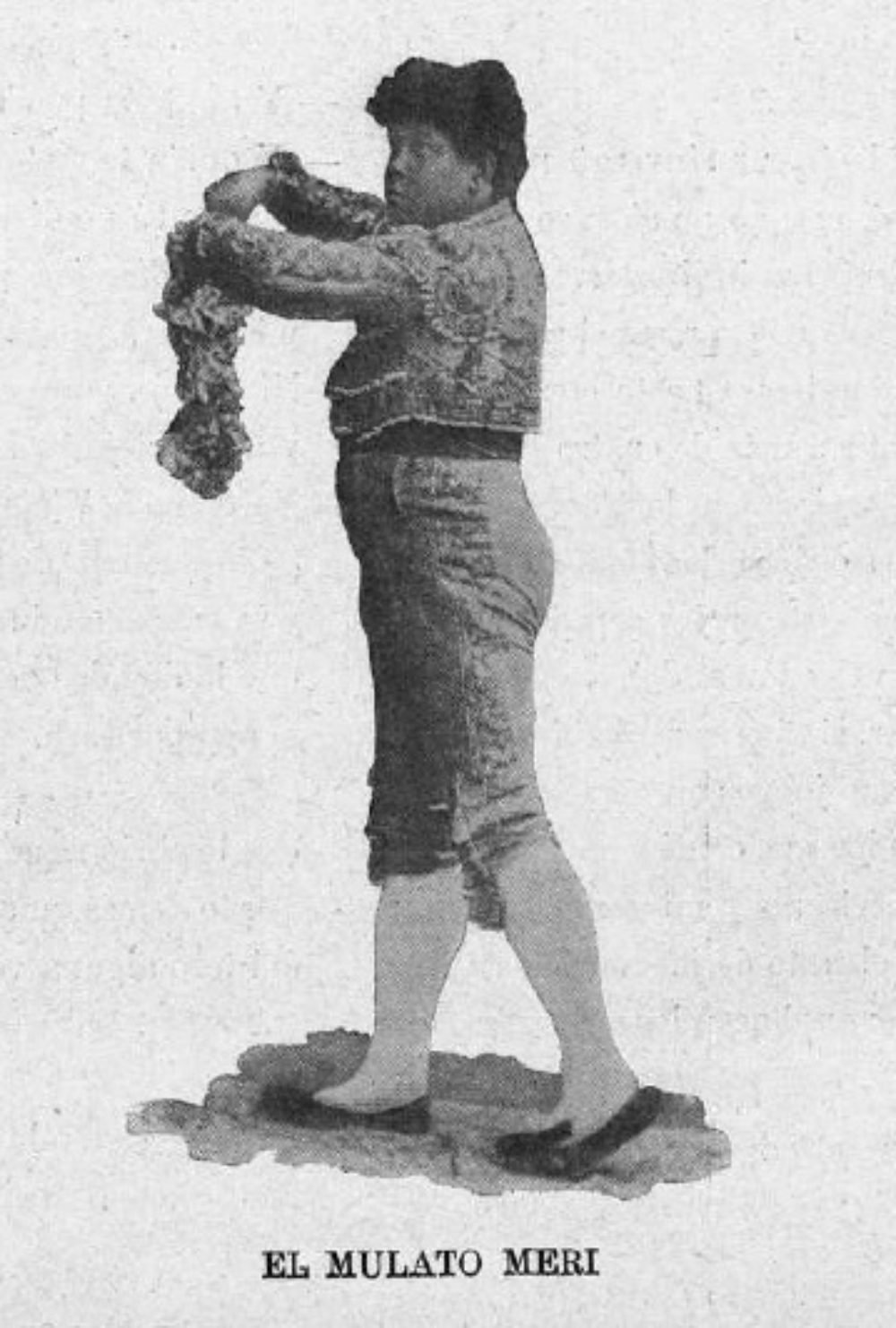
What was the smoking gun? As it were.
Well, Mora kept arguing against me, and I kept arguing against him, and he kept looking for documentation to prove his point, of who these artists might be. And the films are titled Danse Espagnol de la Feria. And this was during the 1900 World’s Fair in Paris. There was a restaurant in the basement of the Spanish Pavilion called La Feria Restaurant. So perhaps the artists in the film were performers at that restaurant. And Mora looked in the press to see who the performers were in that restaurant, and he figured out the cast. He got this list of performers, and that's how he came up with this name of El Meri. And what's really interesting is that what the press says about him is that he is a well-known artist. He was already known in Spain before he came to Paris. He was actually the first person to perform flamenco in Córdoba in 1873. And besides being a flamenco artist, he was also a circus acrobat and a bullfighter. He's just a really, really interesting figure. He tells us a lot about our history.
Interesting. So Kiko saw just by looking at the film that this was a black man, and one who is already a famous dancer by the 1870s. He must be quite old in 1900.
He looks like he's in his 50s. He's a youth in 1873 so I’d guess he’s in his 50s.
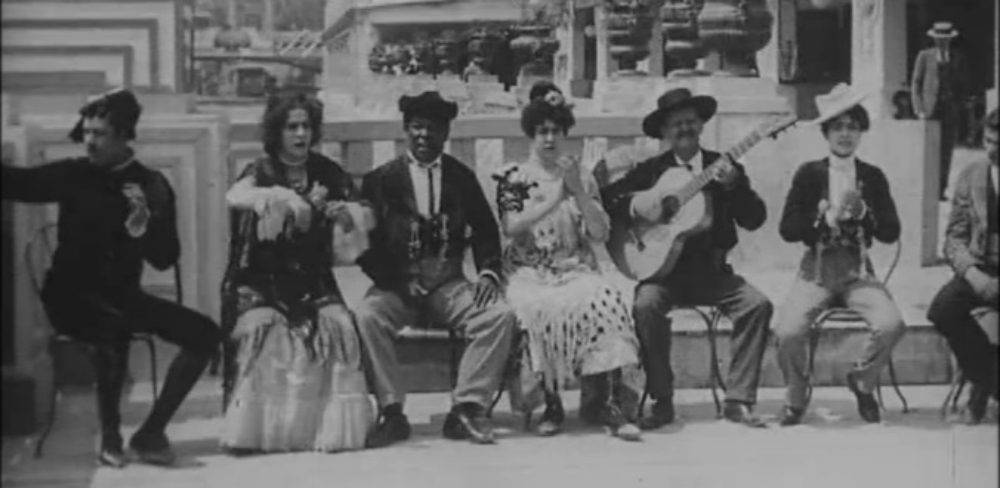
At the time when you were having this disagreement with Kiko, had you started down this road about the blackness of flamenco?
Oh yes. I was well down the road. And this did become a chapter in my book.
So you were already looking at this from the point of view, and yet you were still convinced that it couldn't be a black person?
I know! Well, that was my experience. And it was such a lesson—that you could look at something and not see it. It was such a powerful lesson, and I think it's what Yinka Esi Graves was saying about how you can walk down the street in Spain and see the Africanness in people, which I now see too. Raul makes that point too. His wife is Mozambican, and his kids are two different colors. So it's fascinating to note how those kinds of unconscious assumptions that we all carry around with us color literally our perception of reality. It was a very eye-opening moment. Literally.
Let's talk a little bit about that birth moment of flamenco. Mid-19th century. Do we know exactly when?
The last I looked, the first written record of flamenco performance was in 1850. There are a lot of theories about where the word flamenco comes from. The well-known U.S. flamenco scholar Donn Pohren said in the 1960s, "the origin of the word ‘flamenco’ is fela mengu, ‘wandering peasant’ in Arabic.” Something like that. There are names of dances that refer to people from the early modern period. There are Fulani dances. There are Mandinka dances. So there are these kinds of references in early modern Spanish dance and culture to African ethnic groups. There's a whole groups of dances called Guineos, which is basically referring to black dances. It refers to anyone from what was called the Gold Coast, or the Slave Coast.
But the word “flamenco” in Spanish actually means Flemish. It is very interesting because when we talk about the image of blackness in Spain, Spain sort of invents the idea of race, and the idea of blackness as something that is sinful. But of course what happens in the 18th century is that Spain has been basically decimated by the stresses of maintaining its huge empire, and begins to fall down the stairs like Winnie the Pooh—bump, bump, bump down the stairs. So Spain becomes the fandango. And what is the fandango? Well, it's an African-American dance. In becoming identified with the fandango as its national music, Spain itself becomes black in the 18th century.
Spain lost the Netherlands, the Spanish Netherlands, in 1714. Flanders had actually been part of the Spanish Empire. But in 1700, the Bourbon dynasty, which is a French dynasty, had come into the Spanish throne. The Habsburgs who had ruled over Spain’s glory days, the monarchs of the glory days of Spain, were basically defeated by their own inbreeding. And their last king died without an heir, and so a French king, Felipe V, Louis XIV’s grandson, came onto the Spanish throne. Spanish culture of the 18th century emerges out of resistance to the French, which is majismo. These aristocrats, the majos and majas, famously painted by Goya, dressed up like Roma, like flamencos, and took up dances like the fandango, which then become a kind of marker of national identity, a marker of national identity that is a marker of blackness, which is very interesting
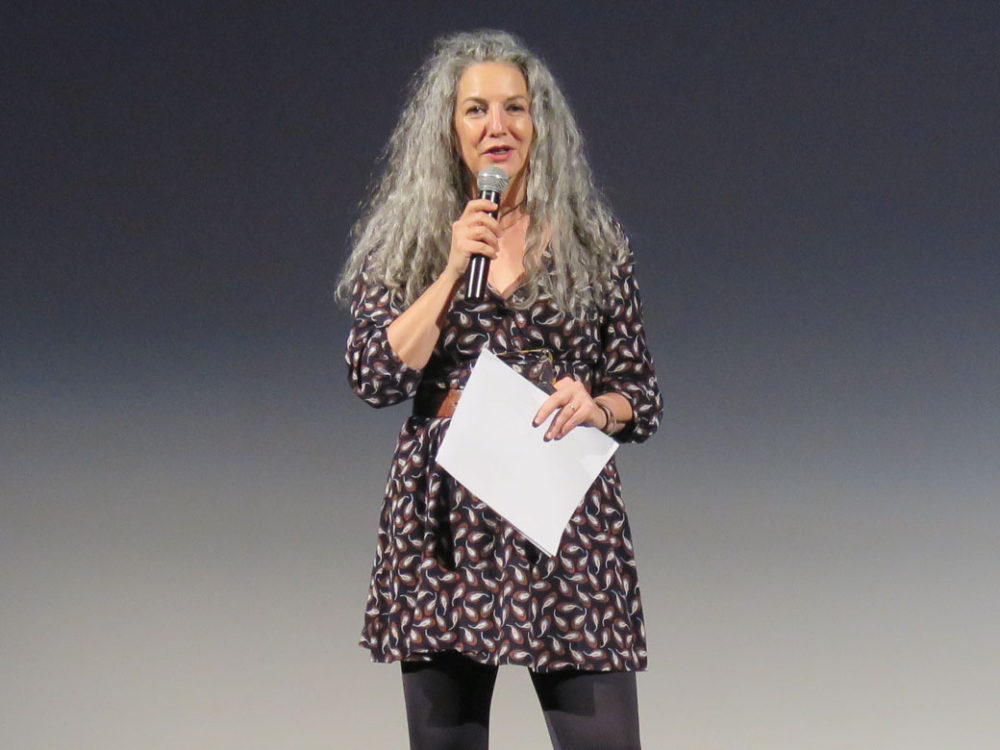
Wow. We’re talking about the 18th century.
For example, there is a Christmas carol that the scholar Jesus Cosano sent me. Cosano has written some wonderful books. He's the one who started this field of looking at the Africanisms of flamenco, already in the early 1990s. His book is called Los Invisibles, The Invisibles. It will eventually be five volumes. One is out, and another one is coming out any day now. Anyway, Cosano sent me a Christmas carol from 1709, and in this carol, it mentions “The Genovese Arara, and the carbonized flamencos.” So basically it is ridiculing the absurdity of the idea of a black European. A Genovese Arara, as a Cubanized religious and artistic practice, and carbonized, or black flamencos are placed into the same category.
By the time flamenco was born in the mid-19th century, this kind of weird association is already there. And it comes to refer to the Roma people. So when people talk about flamenco song, the song of the flamencos, by the 19th century it's the song of the Roma people. There is an English Bible salesman named George Borrow who traveled to Spain in the 1830s, and he wrote a book called The Zincali (1841), which is a really amazing document. In that book, he says that the Gitanos did not want to be known as such, because of course the word Gitanos, like the word Gypsy, carries that root of “gyp” or criminal. It has always had really negative connotations. Bad associations. Borrow said the Spanish Roma, the Zincali, preferred to call themselves either Alemanes, Germans, or Flemmings, Flemish. So they took on these names of Europeans, Germans or Flemish, to sort of disavow their otherness, this image of criminality.
So you have the aristocrats taking on the persona of the Roma, and the Roma doing the opposite.
Exactly. Spanish culture is very convoluted.
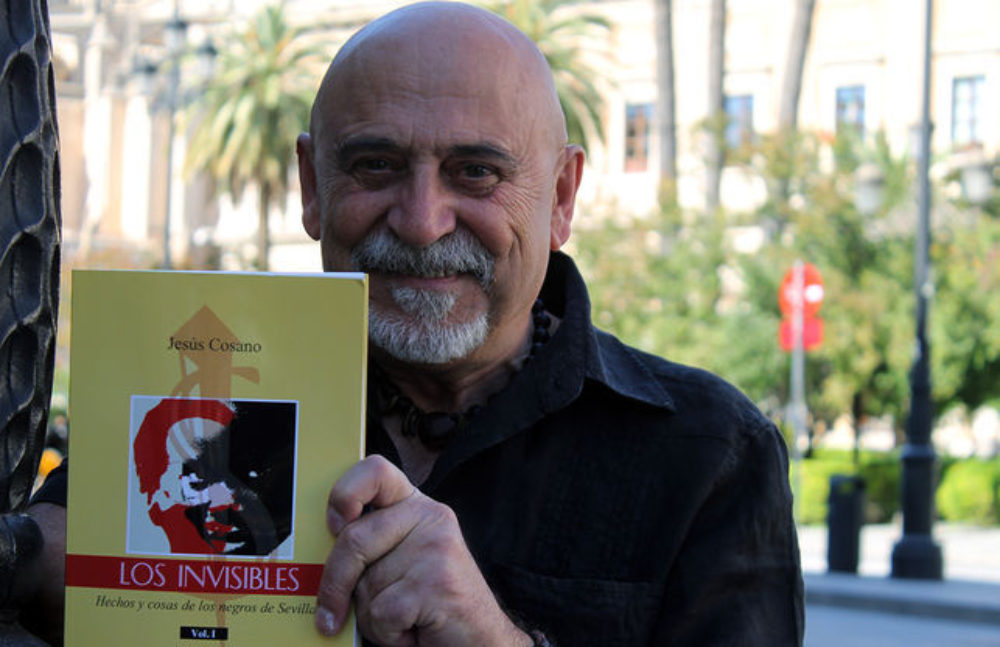
Let me ask you a question about the music. Do we think that music that sounded like what we know as flamenco was already there, and it just took on this name in the mid-19th century? Or was this really a new kind of music that just demanded to be named something?
I don't know, obviously. But I will say that, and Miguel Ángel says this in his film as well, the verse structures that we have come from Al Andalus, from medieval Andalusia. Dwight Reynolds is the one who taught me that, on your program. I think a lot of the content of the first sung flamenco, the legacy, the riches and the inheritance that we have, is to a very great degree this literature, this oral poetry that comes down for centuries. Although there are definitely verses we have that come from 19th-century operettas, for sure. But there are also verses that come from older sources than that. And it's interesting, because there was this whole movement in the 1950s called Mairenismo. It was named after an incredible flamenco singer called Antonio Mairena. And Mairena was going around to the villages in collecting songs from people, and recording them, and he was the one who said, “Flamenco really comes from these Gitano homes, and they would just perform it among themselves, and they preserve these old Spanish ballads, the romances, in the hearths of their homes, and they never showed them to anybody until they decided to reveal them in 1850.”
And of course that is a spin on something that I don't think anybody today really believes is true, but I do think this idea of Roma people being performing artists all the way through – there is something there about people performing music and passing these performances down from generation to generation. Cervantes writes in his novella La Gitanilla about a Gitana performing seguidillas. And seguiriyas are part of the flamenco repertoire now. And that's in 1613.
O.K. Well that's an origin surely. But Miguel seem to think that in 1850, there was more than just putting a name on an existing music. He says it had to do with the evolution of performance venues, and this culture of anti-bourgeois urban life. People were going to these venues to hear this music, and this created a lot of competition, and pressure on the musicians to put on a certain kind of show the people expected, and this coalesced as what we know as flamenco. He seemed to be saying that the music as we know it didn't really exist before.
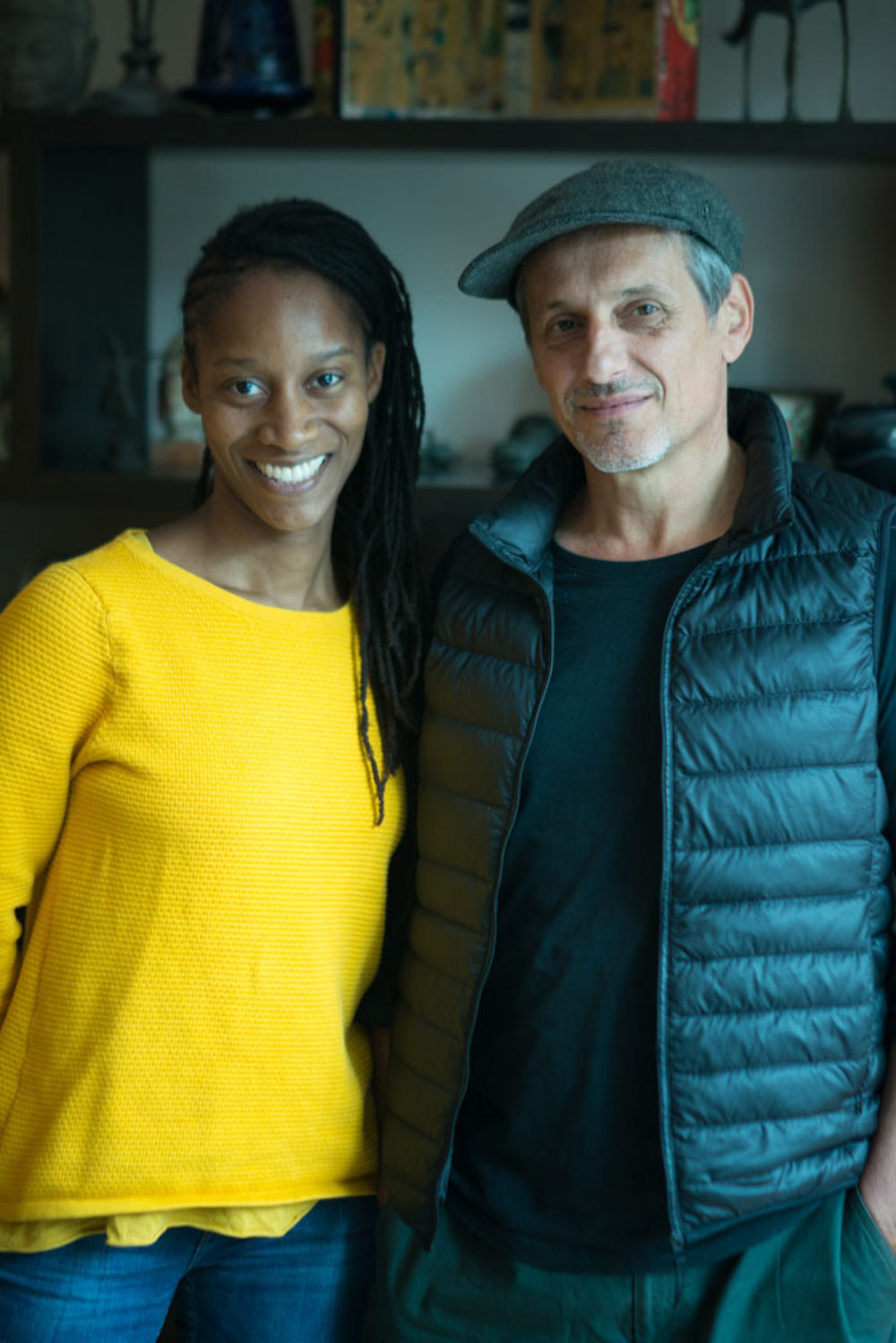
I sort of agree with him, although in some ways I don't completely agree about that. He's talking about the cafes cantantes. The cafes cantantes were basically music halls. Spain was invaded by Napoleon in 1808 and the word guerrilla comes to the English language from the Spanish partisans who in alliance with the British ejected Napoleon’s forces. So all through the 18th century, Spain was fighting against the influence of the French, but the Italians are always also problematic. And in the beginning of the 19th century, Italian bel canto was the big rage and there were all of these dilettantes. They were like the flamenco aficionados, but also like the football fans that know their players, and the opera fans who know their singers and what they sing. And they get together as amateurs and sing these songs. And in Andalusia, Luis Lavaur, who is one of the big scholars of Romanticism, and the impact of Romanticism on flamenco, says that in Andalusia, these dilettantes became aficionados. And they began singing what were their own national songs, and making these songs more “Spanish,” ironically, pushing them toward a flamenco stylization, which is to say that they become “Gypsified”—this is a kind of minstrelization, a kind of blackface.
So we get the weird dynamic of: "We Spaniards are outlaws because we are oppressed by the French monarchy." This outlaw figure becomes adopted already in the 18th century and by the early 19th century, what they're doing, as Miguel Ángel says—and on this I totally agree with him—is that they're elaborating these musics and songs and making them much more performative and more virtuosic, and obviously, by the time you get to the heyday of the cafés cantantes, which is the 1880s and even into the ‘90s, there were virtuosic flamenco singers. Silverio Franconetti was somebody who made people sit down and listen to a concert of flamenco singing, which had never been done before, because before this time flamenco was something you sang in a bar. And Silverio elevated flamenco and gave it that higher cultural status.
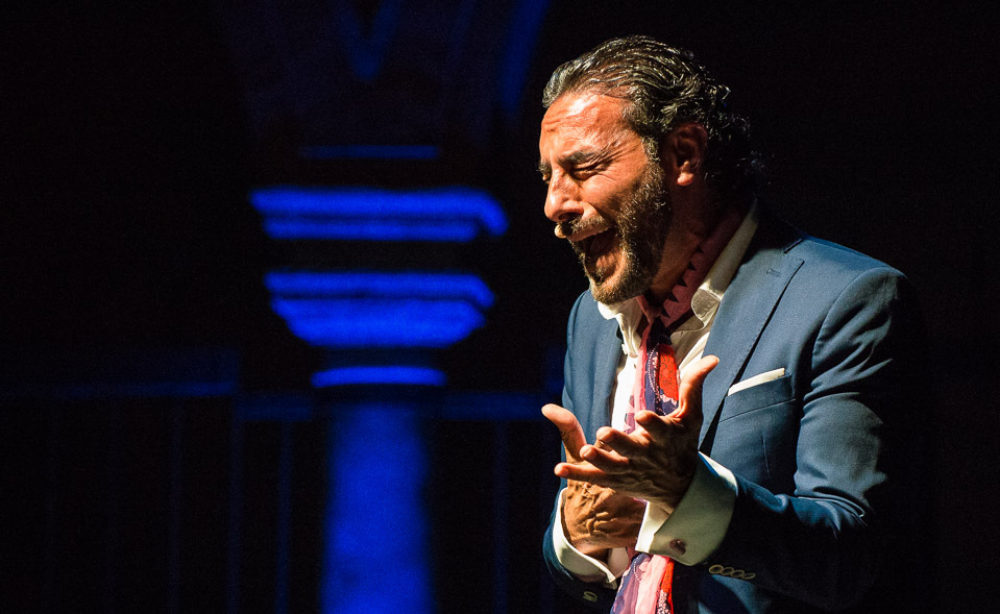
Let's talk about the singing. I've always been fascinated by the character of the vocal style. It couldn't be further from bel canto. The roughness, the rawness. It's almost brutal. It's unusual in any European context, until you get to punk rock, to have that kind of character in art singing.
I'm really interested in that. In fact, that's what my next book is going to be about. I am really interested in traces of the body. We can infer in the verse forms, using today's language of flamenco, we can infer, or at least I have inferred, something about how those verses would have been danced and how they would have been structured, and also something about how they would have been sung. And I guess the other part of my answer to your question is to say that I just think what we now hear as flamenco song is very old. It's like when you practice flamenco, it's so complicated. It's such a complicated system of rhythmic interaction and melodic interactions, and aesthetic detail. There's just so much happening in it. There's so much culture in it. It's just old. I just know it's old. I just have that feeling.
And so I think those rhythms are old, and those uses of the voice are old. And I don't know where they come from, but they certainly don't sound European to me, I completely agree. And in terms of the image, I also think that what's true about flamenco is that it really does express a subjectivity. It expresses humanity, it expresses personhood in a way that was denied to many of the people that we’re talking about here. Afro-descendants. Jews and Muslims. Roma people. They were all social outcasts. They were not citizens. They were not eligible for advancement in society. And what this figure has always meant, why this flamenco figure has become a national symbol in Spain, is because this figure speaks to the Spanish people as a whole in wanting to be human, wanting to be people. There's something about that kind of expression of emotion that, yeah, the Modernists and Lorca and everybody mythologized it and whatever. But I think it's also real. I think it's something that's deep and kind of ancient.
Fantastic, Meira. Thanks so much for this and for inspiring this program.
Related Audio Programs
